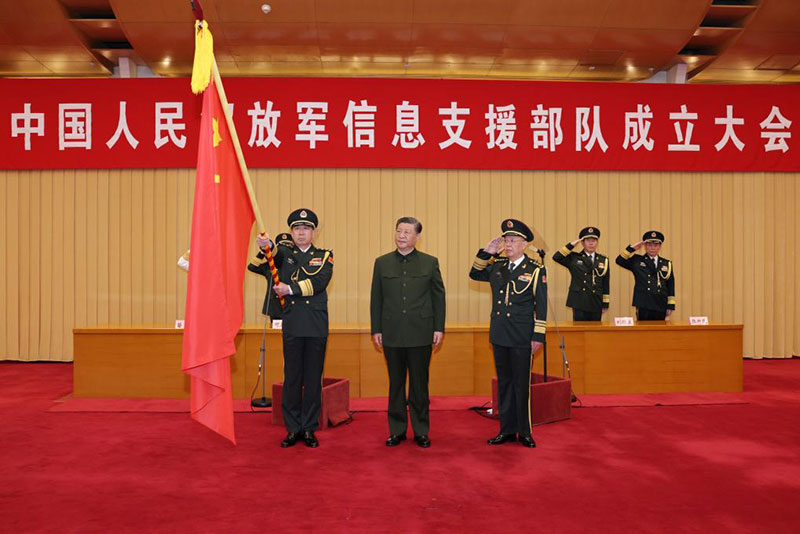Powered By AI in Networks
Pravin Sawhney
In a significant development with implications for modern warfare, China’s People’s Liberation Army (PLA) announced its second set of reforms on 19 April 2024 with the Chairman, Central Military Commission (CMC) and the commander-in-chief, Xi Jinping handing over the flag of the new arm called Information Support Force (ISF) to his top commanders. The first set of reforms, also under Xi Jinping, were announced in 2015.
In the present set of reforms, a maverick organisation called Strategic Support Force (SSF) created under 2015 reforms was broken down into three arms—aerospace (space) force, cyber force, and ISF. The PLA now has four services—ground forces (army), air force, navy, and rocket force, and four arms, that is, aerospace force, cyber force, ISF, and joint logistics support force. All services and arms report directly to the PLA’s highest policy making body, the CMC. While the services interact at the level of theatre commands, the arms can interact at all levels of combat with Combined Arms Battalion (CAB) being the lowest unit.
A big outcome of making aerospace force and cyber space independent arms is that they can focus more on their strategic task involving whole-of-nation (war zone), as distinct from their battlespace (combat zone) tasks. The PLA wants to use cyber and space capability for strategic deterrence implying they would be in the category of nuclear weapons, but unlike them, readily usable.

Before proceeding further, a quick refresher on the SSF, which was created by the 2015 reforms. It was an original operationally useful idea where three inter-connected war domains were brought under one organisation reporting to the CMC. The war domains of cyber, EMS (Electro Magnetic Spectrum), and space under the SSF provided a continuum through which digital information travels. For example, if malware (malicious software) is inserted into cyber space, it uses one of the seven waves which comprise the EMS to transmit. Next, the electromagnetic pulses or signals connect with satellites, which in turn relate to ground stations and space-based sensors, thus making the whole continuum inoperative. This has two operational implications: one, since operations in air, land, sea, and space are dependent on information in cyberspace, it has become the controlling domain in all-domain warfare. The latter is called informatised warfare with Joint Integrated Operations (JIO) at its heart. Thus, commensurate with connectivity (networking) of domains, the criticality of defending cyberspace has grown. And two, since EMS is the foundation domain being the enabler of operations in every other domain (cyber, space, land, air, and sea), without dominance or superiority in this domain, war cannot be won. Combat i
Subscribe To Force
Fuel Fearless Journalism with Your Yearly Subscription
SUBSCRIBE NOW
We don’t tell you how to do your job…
But we put the environment in which you do your job in perspective, so that when you step out you do so with the complete picture.







